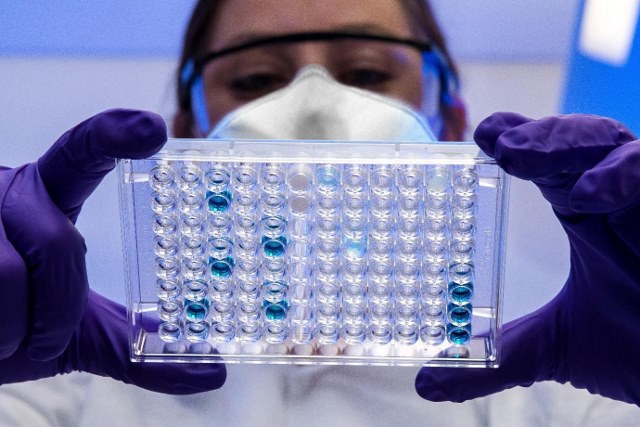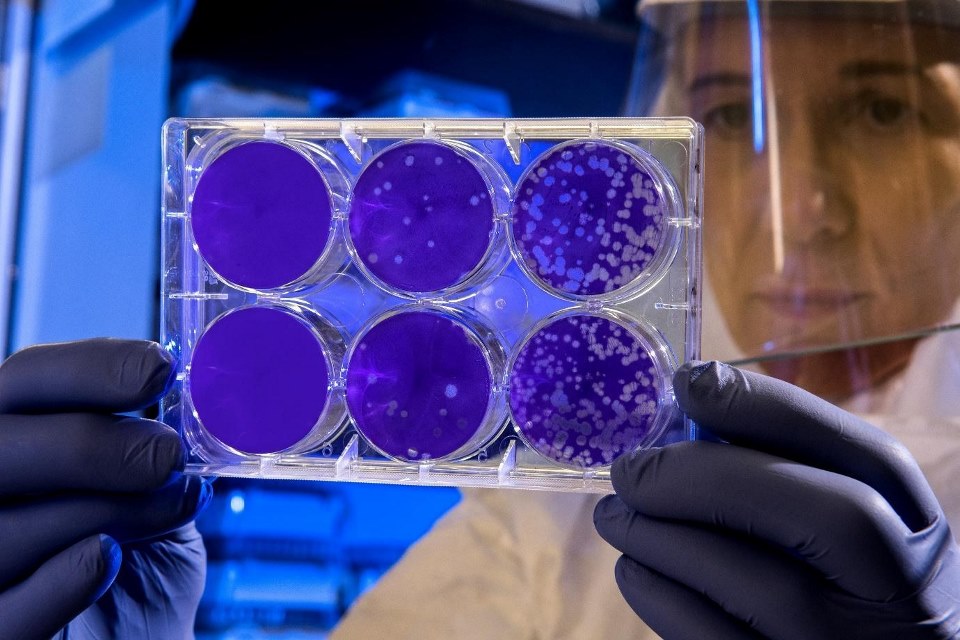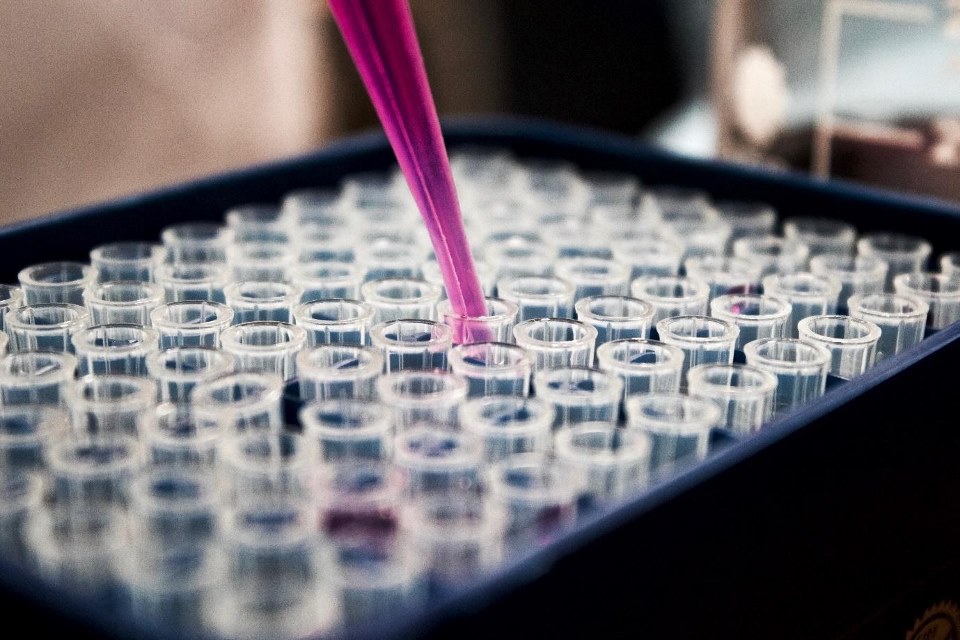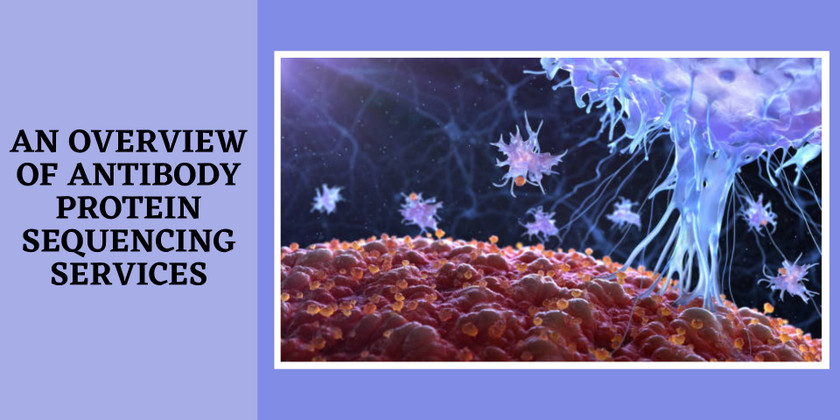An Overview of Antibody Protein Sequencing Services
May 2nd 2023
In today’s modern world, biotechnology has gained significant ground in the commercial market. Gone are those days when a simple antibody test took forever. But, if you’re wondering what antibodies we’re referring to, you might be mistaken.
Even though antibodies are important proteins the immune system produces to protect the body from harmful pathogens, they attach themselves chemically to the substances the body identifies as alien, like viruses, bacteria, and other foreign substances in the blood.
On the other hand, industrial antibody-based therapeutics have become quite popular in the health industry due to their wide range of applications. As a result, this has increased the demand for accurate sequencing of these proteins.
Antibody protein sequencing is an efficient and reliable way of assessing the protein’s amino acid sequencing for identification and characterization. Contemporary biochemistry and biology depend heavily on commercial antibodies. Notably, the United States spends approximately $2 billion annually on these antibodies. However, most of them seem ineffective and could accelerate the “reproducibility crisis” that biological sciences experience.
This post will provide an overview of antibody protein sequencing services, including the antibody sequencing basics, its growth, the techniques of sequencing antibodies, alignment tools, and more. Please continue reading to discover more about these sequencing services.

What is Antibody Sequencing?
As the introduction mentions, antibodies are fundamental components of one’s immune system, fighting sickness and infection and keeping the body safe. Antibody protein sequencing entails identifying the order of amino acids in unidentified antibodies without needing a hybridoma cell line or mRNA.
Many researchers and scientific organizations rely on these services, including antibody engineering, function optimization, database banking, obtaining new antibody clones, etc. These disciplines evaluate the amino acid makeup to understand their sequencing – whether monoclonal or polyclonal, from a humanized, recombinant, or hybridoma.
Mass spectrometry has been the most preferred method for sequencing proteins in recent years, and it supports amino acid sequencing from start to end. It provides better accuracy and facilitates sequencing even if you don’t have the DNA sequence. Conjugated or contaminated antibodies can also be sequenced, and the results from this technique are pretty precise.
On the other hand, de novo antibody sequencing evaluates the mass difference between fragment ions to identify the residue mass in a peptide sequence. It is theoretically feasible to obtain the peptide sequence since most amino acids have a unique mass, except isoleucine and leucine. However, numerous other techniques exist for identifying the protein sequence in unknown antibodies. But first, let’s discuss the antibody sequence alignment tools.
Antibody Sequence Alignment Tools
Did you know antibody sequences are crucial in therapeutic development since they help in antibody engineering and protein characterization? Conducting sequence alignment/analysis offers users of antibody reagents important information that helps identify cross-reactivity and binding – both of these are key prerequisites for rational experiment design. Several antibody databases are available online, storing different data types, such as usage statistics, suppliers, and publication citations. These antibody databases are often employed in reproducibility.
Employing an antibody sequence alignment tool helps to decipher a particular genome sequence that has not been sequenced. However, when researchers know the sequence, they can use other antibody sequence databases to analyze it.
Some of the top antibody sequence databases comprise:
1. International ImMunoGeneTics (IMGT)
The International ImMunoGeneTics data system, or IMGT, is an integrated knowledge resource many organizations use as a global reference. This information system specializes in immunoglobulins (Ig), Major Histocompatibility Complex (MHC), and T cell receptors (TCRs) molecules that humans and most vertebrates have.
The database consists of archives detailing antibody sequencing, structure, and genome. For example, IMGT/mAb-DB, a monoclonal antibodies database, is widely used in clinical setups and fusion proteins in immune-based research.
2. abYsis
This online database for antibody research is equipped with a central storehouse for structural and sequence information regarding antibodies. You can apply the abYsis database in three ways:
- To perform a database search to find more information about sequences, like thorough annotations, post-translational modification sites, location of odd residues, and more
- To assess constant patterns in the database sequences
- To key in sequences for further examination
3. UniProt
This database is one of the highest quality, readily available, and most extensive functional and protein sequence information databases. Since UniProt is not primarily focused on antibodies, this database only has limited non-germline antibody sequences and a representative sample of germline antibody sequences.
4. SabDab
Also known as Structural Antibody Database, SabDab is an online database comprising all the antibody structures available in the PDB. What’s more, these structures are standardized and annotated. Users employ these traits and structural factors, such as changeable domain orientation and complementarity defining area loop conformation, to narrow their search for the proper structure.
5. ABCD database
Established in 2020, this database is an assortment of sequenced antibodies comprising protein structures, cross-links of regulated chemical databases, and curated data in various antibodies and their antigens. Every antibody is assigned a unique ID number for scholarly publications to enhance experiment reproducibility

Polyclonal Vs. Monoclonal Antibodies
The terms "polyclonal" and "monoclonal" come from how the immune system makes antibodies. The B-cell lymphocyte is differentiated into memory B-cells and plasma cells in response to a foreign antigen binding to its surface antigen receptor. This produces antibodies that are unique to the triggering antigenic epitope.
Since antigens differ in size from small molecules to massive recombinant proteins, a single antigen could include many epitopes. Since numerous B-cells can detect the same antigen, the immune response comprises antibodies generated by different B-cells that target different epitopes on the same antigen. This is known as a polyclonal response. In its simplest definition, a polyclonal antibody is a group of antibodies produced by several B-cell clones in response to the same antigen.
Assume that just one B-cell replied to a specific antigen. Because this cell detects just one epitope, it will grow, divide, and generate antibodies specific to that epitope. This is known as a monoclonal reaction. A monoclonal antibody is an assortment of antibodies generated by a single B-cell clone specific to a particular antigenic epitope.
Between monoclonal and polyclonal antibodies, the former has proven highly reliable in research, diagnostic, and bio-therapeutics production. Monoclonal antibodies possess a high specificity as they can only attach themselves to a single epitope of an antigen. This is why they are gaining massive popularity, which keeps on growing. In contrast, polyclonal antibodies, which are less consistent and stable, can attach themselves to various epitopes – hence, they are less likely to experience cross-reactions.
Techniques of Antibody Protein Sequencing
There are numerous methods used for protein sequencing. Traditional Sanger sequencing, suitable for small-scale applications, is the pioneer in identifying an antibody’s nucleic acids. Large-scale techniques, known as next-generation sequencing, are more modern and effective strategies. Modern antibody sequencing includes Edman degradation, mass spectrometry, de novo sequencing, hybrido sequencing, etc. Let’s discuss these techniques in more detail.
1. Edman Degradation
When it comes to edman degradation, know that it is a chemical method that involves breaking down the amino acid sequence of a protein one amino acid at a time. This technique depends on removing one amino acid and its subsequent identification, then moving on to the next amino acid. This method has been used for decades and is still considered reliable for sequencing proteins. However, scaling up for large-scale sequencing projects is time-consuming and challenging.
2. Mass Spectrometry
Speaking about mass spectrometry, it’s a potent analytical technique that determines the mass-to-charge ratio of individual molecules. In protein sequencing, mass spectrometry fragments the protein into smaller peptides and analyzes them to determine their sequence. This method is susceptible and can sequence proteins with high accuracy.
3. Hybrido Sequencing
Hybrido sequencing entails sequencing the cDNA in the hybridoma cell line’s variable light (VL) and variable heavy (VH) domains. This technique is one of the most economical protein sequencing techniques as long as the cell line that produces the required antibody is easily accessible.
3. Next-generation Sequencing
If you were unaware, next-generation sequencing (NGS) is a high-throughput method that has revolutionized many areas of biology, including protein sequencing. In NGS, millions of DNA or RNA sequences are generated in parallel, leading to a fast and accurate sequencing of large protein numbers. This method is relatively new in the biology industry and requires further optimization for protein sequencing.
4. De Novo Peptide Sequencing
De novo peptide sequencing is a technique that determines the amino acid sequence in a particular antibody. It is often used instead of sequencing nucleic acids. The sequence is broken down into several pieces, and then mass spectrometry is employed to determine the mass-to-charge ratio of every piece. The researcher uses bioinformatics software that identifies overlapping sequences to discover and rebuild the fragments into one complete sequence.
Some significant advantages of de novo sequencing include the following:
- End-to-end sequencing – if you have proprietary software for de novo protein sequencing and high-quality mass spectrometry in optimal settings, you can sequence the whole protein, from the C-term to the N-term, without leaving any amino acid out
- Numerous applications – besides human beings, mass spectrometry technique can sequence any antibody, regardless of its mass, including IgA, IgY, IgM, IgG, ScFv, Fab, etc., from any animal. It can also sequence antibodies that are conjugated, polluted, or possess two unique light chains.
- Better accuracy – powerful signal peak patterns from various mass spectrometry readings allow this technique to identify every amino acid in the sequence precisely.
- No need for the producer cell – even when the hybridoma that produced the initial custom antibody is not accessible, you can still recreate the antibody even from 0.2g of antibody protein via recombination
5. Intact Mass Analysis and Peptide Mapping
Although these tools can’t replace de novo or mass spectrometry antibody sequencing, they can accurately verify an unidentified antibody’s protein sequences. The intact mass analysis is deemed successful if the protein’s molecular weight is similar to the results observed experimentally.
Peptide mapping helps you determine if the precursor peptides are what you initially thought. These techniques are unreliable for independent sequencing because of their inability and limitations to determine specific amino acids.

Applications of Antibody Protein Sequencing Services
Antibody protein sequencing services have many applications in the healthcare industry and biomedical research. Here are some examples:
Analyzing antibody concentration
You can estimate the number of antibodies using a general protein assay or a technique specific to the immunoglobulins and species, like specialized micro-agglutination assay kits. This process involves linking the titer to the effective potency of the antibody sample. To obtain the titer measurement, researchers use ELISA kits to determine the appropriate dilution of the antibody sample for detection in a particular experiment.
Quality control of monoclonal antibodies
Monoclonal antibodies (mAbs) are an essential class of therapeutic proteins that treat various diseases, including cancer and autoimmune disorders. Accurate sequencing of mAbs is essential as it plays a substantial role in their safety, efficacy, and production consistency. Antibody protein sequencing can verify the identity and purity of mAbs and detect any potential impurities or modifications that could affect their quality.
Identification of unknown antibodies
Antibody protein sequencing helps identify unknown antibodies to determine their specificity and affinity for their target antigens. Researchers use this information to develop new diagnostic tests or therapeutic agents for various diseases.
Characterization of immune responses
Antibody protein sequencing studies the body’s immune response to various pathogens or vaccines. Sequencing the antibodies the immune system produces helps researchers gain insights into the nature and duration of the immune response. It also helps them identify potential targets for vaccine development.
Factors to Consider When Choosing an Antibody Protein Sequencing Services
- Experience and expertise. It is crucial to choose a service provider with extensive antibody protein sequencing experience and who employs a team of highly skilled scientists with expertise in various sequencing methods. An experienced team can ensure that the sequencing results are accurate and reliable, which can be crucial for drug discovery and development applications.
- Quality and accuracy. Quality and accuracy are crucial when choosing an antibody protein sequencing service provider. You should select a provider with high-quality reagents and equipment and a proven track record of delivering accurate sequencing results.
- Turnaround time and scalability. It’s advisable to assess the provider’s turnaround time when choosing an antibody protein sequencing service provider, especially if you have time-sensitive projects. You should also consider whether the provider can handle large-scale projects if necessary. Choose a provider offering a fast turnaround time and scale up their services if required.

The Bottom Line
What do you need to know about antibody protein sequence services? We hope you have received all the information you need to choose an exemplary service for your research. Antibody sequencing and custom protein synthesis experience numerous challenges. These challenges include inadequate user awareness, poor supplier performance from recombinant antibody production, and poor characterization and verification. As a result, these challenges can cause substantial personal and financial expenses. It would be best to assess your research needs and select the best antibody sequencing service provider.

